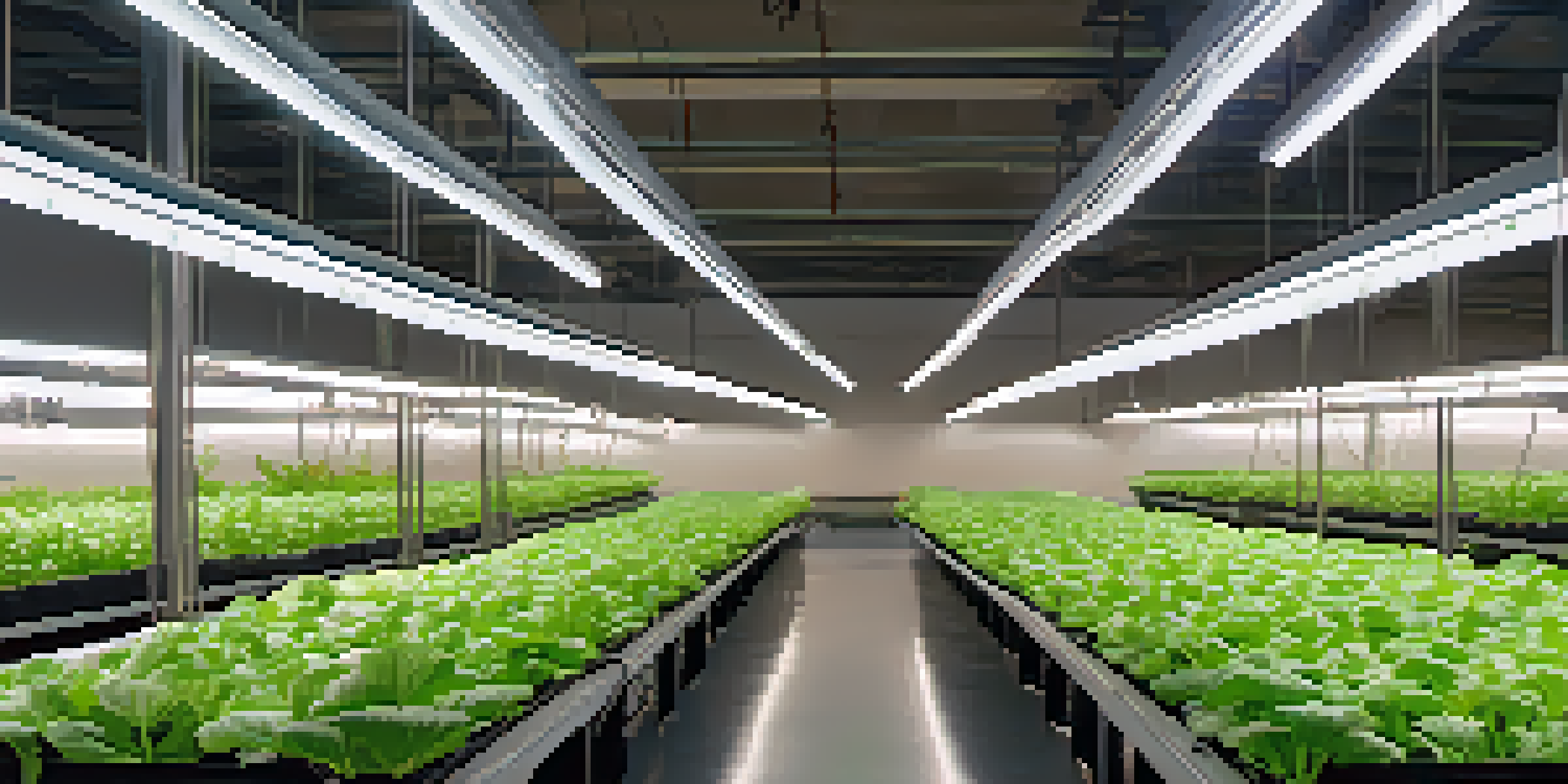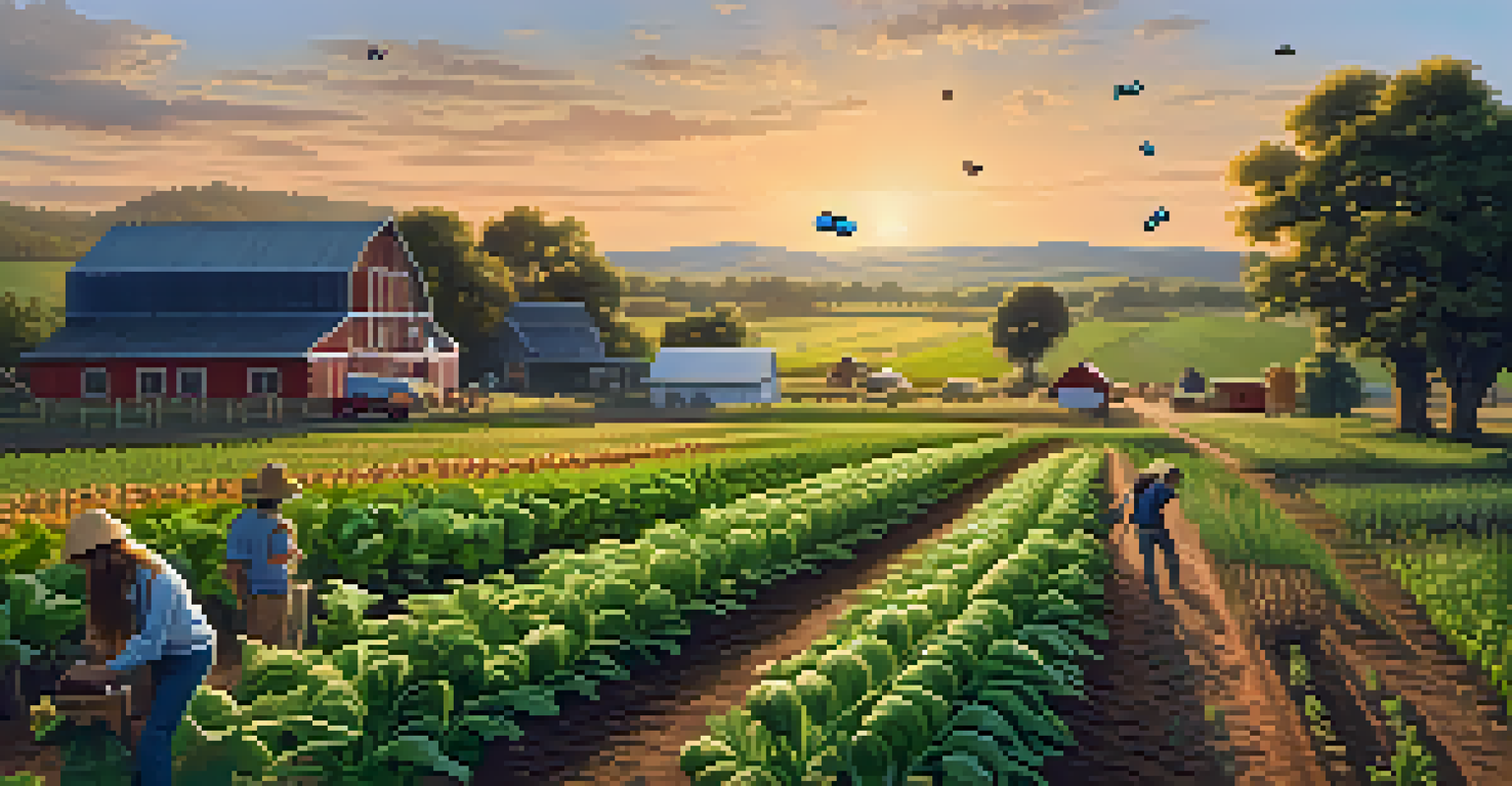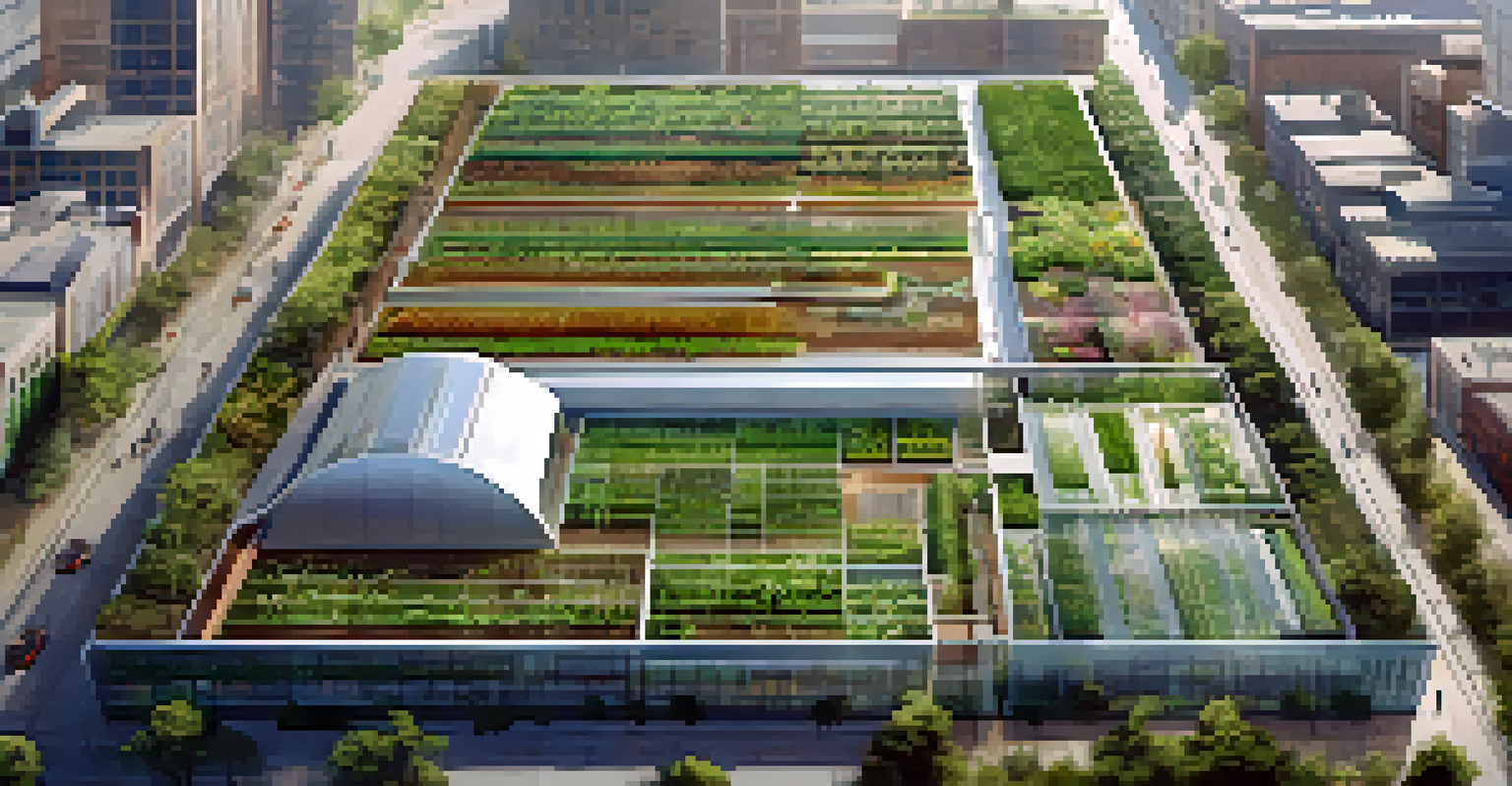Indoor vs. Outdoor Cultivation: Sustainability Considerations

Understanding Indoor Cultivation's Environmental Impact
Indoor cultivation involves growing plants inside controlled environments, often using artificial lighting and climate control. This method can lead to higher energy consumption, which raises concerns about its carbon footprint. However, it also allows for year-round growth and reduced pesticide use, which can benefit the ecosystem in other ways.
The greatest threat to our planet is the belief that someone else will save it.
One major advantage of indoor cultivation is the ability to recycle water and nutrients efficiently. Hydroponics and aeroponics are common techniques that minimize waste and maximize yields. This closed-loop system can reduce the overall environmental impact when managed properly.
Moreover, indoor farms can be located closer to urban areas, reducing transportation emissions associated with delivering fresh produce. By bringing food production closer to consumers, indoor cultivation can contribute to a more sustainable food system while ensuring freshness and quality.
Exploring Outdoor Cultivation's Benefits and Drawbacks
Outdoor cultivation relies on natural sunlight and the local climate, making it generally less energy-intensive than indoor farming. Traditional farming practices can harness the earth's natural resources effectively, potentially leading to a lower carbon footprint. However, outdoor cultivation is heavily dependent on weather conditions, which can be unpredictable and affect yields.

In terms of biodiversity, outdoor farms can support a variety of ecosystems, attracting beneficial insects and promoting soil health. Crop rotation and polyculture methods can enhance sustainability and resilience against pests and diseases. Yet, these practices require knowledge and experience to implement effectively.
Indoor Cultivation's Environmental Trade-offs
While indoor cultivation allows for year-round growth and efficient resource use, it also raises concerns about energy consumption and carbon footprint.
On the downside, outdoor farming is often susceptible to pesticide runoff and other environmental pollutants, which can harm local wildlife and water sources. This raises questions about the long-term sustainability of conventional outdoor farming practices, highlighting the need for more eco-friendly methods.
Energy Consumption: A Key Factor in Sustainability
Energy consumption plays a pivotal role in determining the sustainability of both indoor and outdoor cultivation. Indoor farms typically consume significant amounts of electricity for lighting and climate control, which can lead to higher operational costs and a larger carbon footprint. However, advancements in technology, like energy-efficient LED lights and renewable energy sources, are helping to mitigate these impacts.
Sustainability is not a choice, it is a necessity.
Conversely, outdoor cultivation generally relies on natural sunlight, which dramatically reduces energy needs. However, it may still involve energy-intensive practices such as irrigation and transportation. Striking a balance between these energy demands is crucial for enhancing the sustainability of outdoor farming.
Ultimately, evaluating energy consumption is essential for both methods, as it directly affects their environmental footprint. Sustainable practices, such as using solar panels for indoor farms or implementing water-conserving irrigation techniques in outdoor fields, can help bridge the gap between energy needs and sustainability.
Water Use: Comparing Indoor and Outdoor Systems
Water use is another critical consideration when assessing the sustainability of indoor versus outdoor cultivation. Indoor systems, particularly hydroponics, can use up to 90% less water compared to traditional soil-based farming. This efficient use of water resources is especially vital in areas prone to drought or water scarcity.
On the other hand, outdoor cultivation often relies on rainfall and natural irrigation methods, which can be variable and unpredictable. While some outdoor farms implement rainwater harvesting techniques to improve their water sustainability, the overall effectiveness can be influenced by changing climate patterns.
Outdoor Farming's Sustainability Challenges
Outdoor cultivation benefits from natural resources and biodiversity but faces risks from weather dependence and environmental pollutants.
Therefore, the choice between indoor and outdoor cultivation can significantly impact water consumption and management. By adopting innovative irrigation systems and technologies, both methods can strive for greater water efficiency and sustainability.
Soil Health and Nutrient Management in Agriculture
Soil health is a vital aspect of sustainable agriculture, particularly in outdoor cultivation. Healthy soil is teeming with microorganisms that contribute to nutrient cycling and plant growth. Practices like crop rotation, cover cropping, and reduced tillage can enhance soil structure and fertility, promoting a thriving ecosystem.
In contrast, indoor cultivation often relies on soil-less systems, such as hydroponics, where nutrients are delivered directly to plants. While this method can lead to faster growth and higher yields, it may overlook the importance of maintaining healthy soil ecosystems, which play a crucial role in long-term sustainability.
Balancing soil health and nutrient management is essential for both cultivation methods. By integrating organic fertilizers and sustainable practices, farmers can improve productivity while preserving the environment for future generations.
Pest Management: Strategies for Sustainability
Pest management is a critical component of any agricultural practice, and both indoor and outdoor cultivation face unique challenges. Indoor farms often utilize integrated pest management (IPM) techniques, combining biological controls and minimal pesticide use to protect crops. This approach can lead to healthier plants and reduce chemical exposure to the environment.
Outdoor cultivation, however, must contend with a wider range of pests and diseases due to exposure to natural ecosystems. While chemical pesticides are commonly used, they can pose risks to beneficial insects and soil health. Sustainable outdoor practices like companion planting and natural predators can help mitigate pest issues without harming the environment.
Economic Factors Shape Farming Choices
Both indoor and outdoor farming require careful economic consideration, balancing initial investments with long-term sustainability and profitability.
Ultimately, adopting sustainable pest management strategies is essential for both cultivation methods. By prioritizing ecological balance and using alternative methods, farmers can protect their crops while promoting biodiversity and environmental health.
Economic Factors Influencing Cultivation Choices
Economic considerations play a significant role in the decision-making process for both indoor and outdoor cultivation. Indoor farms often require substantial upfront investments in technology and infrastructure, which can be a barrier for many aspiring farmers. However, the potential for higher yields and year-round production may offset these costs over time.
On the flip side, outdoor cultivation typically involves lower initial expenses, as farmers can utilize existing land and resources. However, fluctuating market prices and unpredictable weather can impact profitability, making long-term planning challenging. Understanding the economic landscape is crucial for sustainable farming practices.

By weighing the financial aspects alongside environmental considerations, farmers can make informed choices that align with their sustainability goals. Whether opting for indoor or outdoor cultivation, a strong economic foundation is essential for success in the agricultural sector.